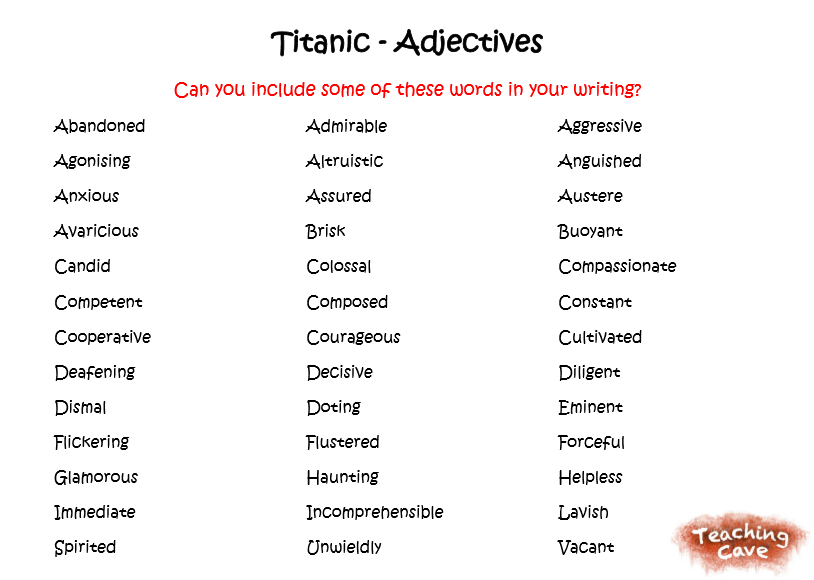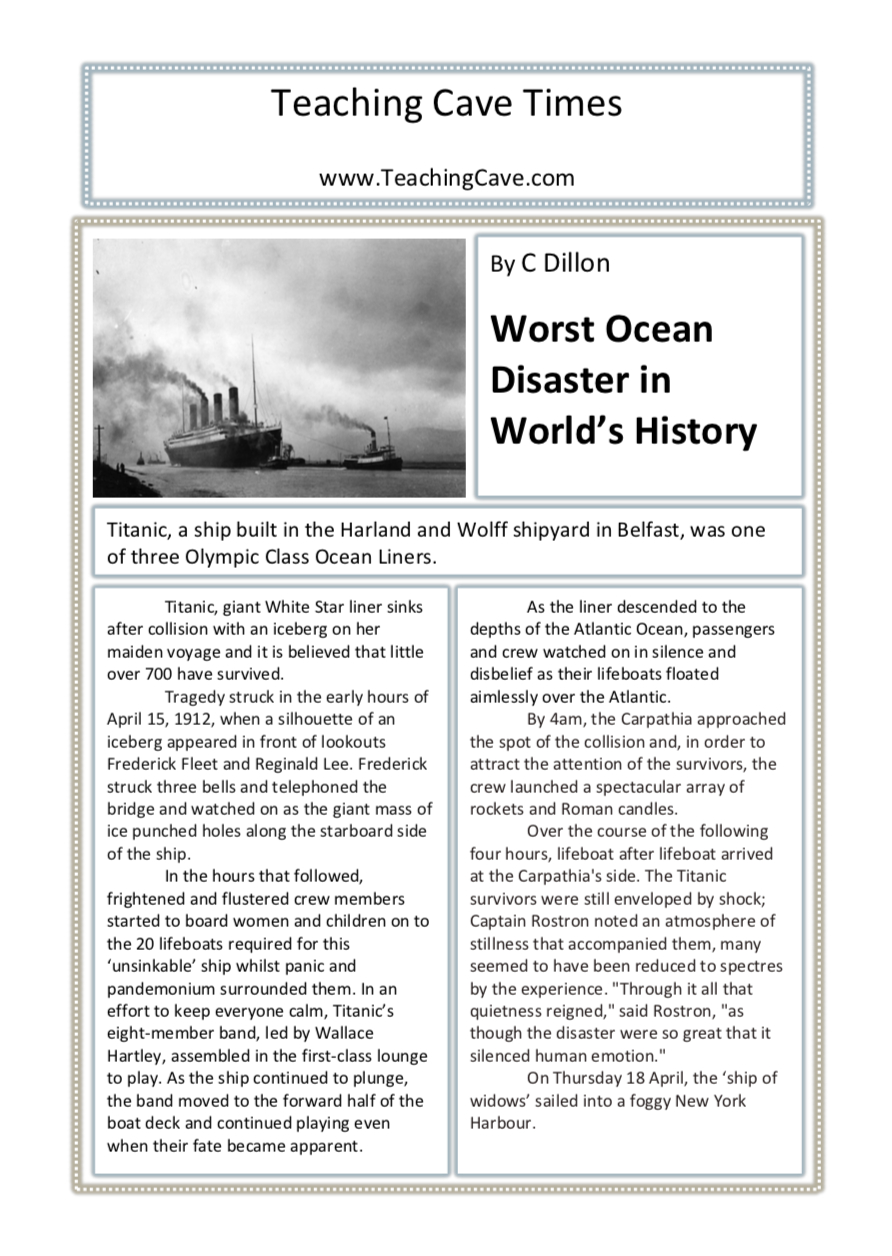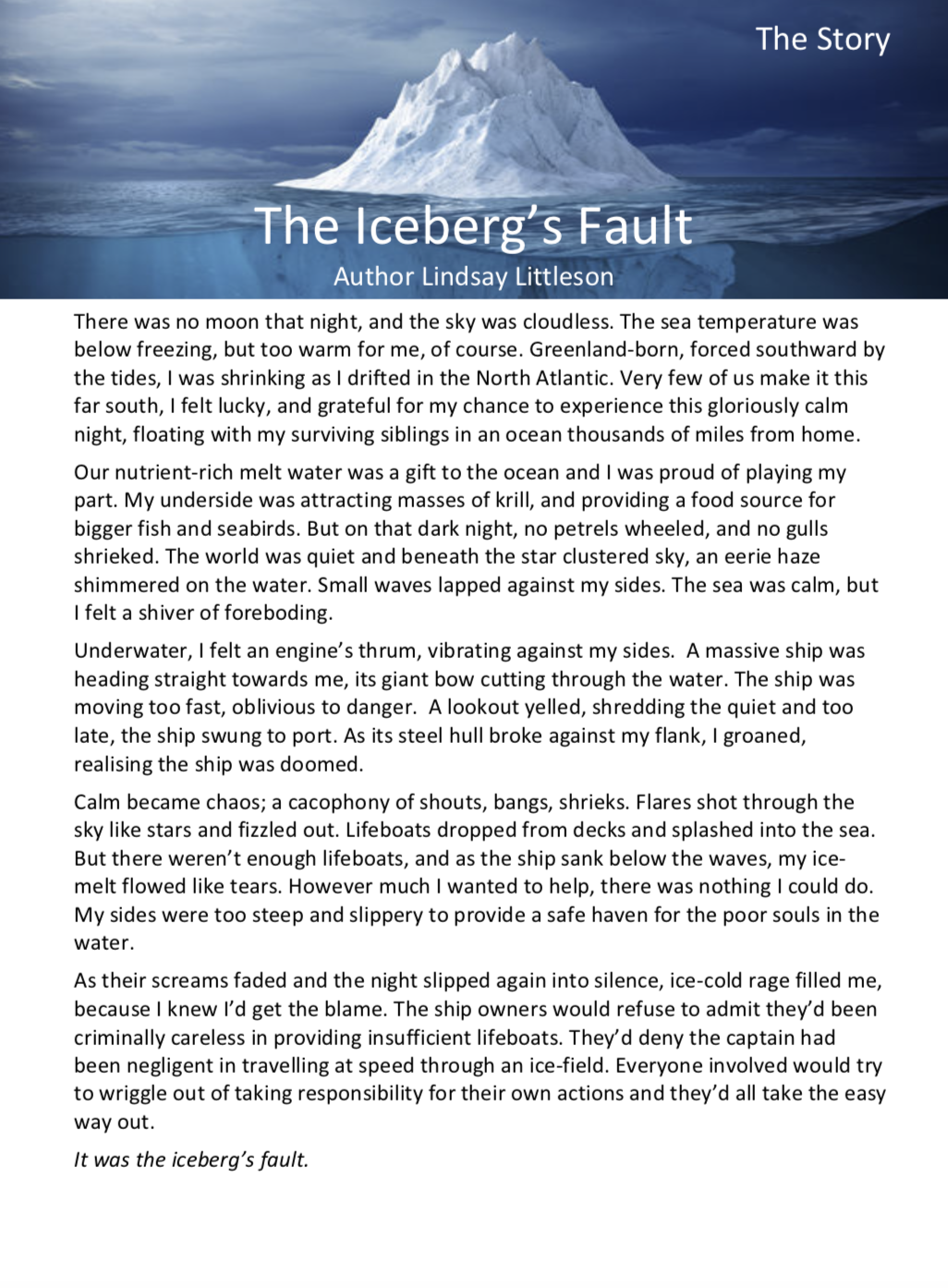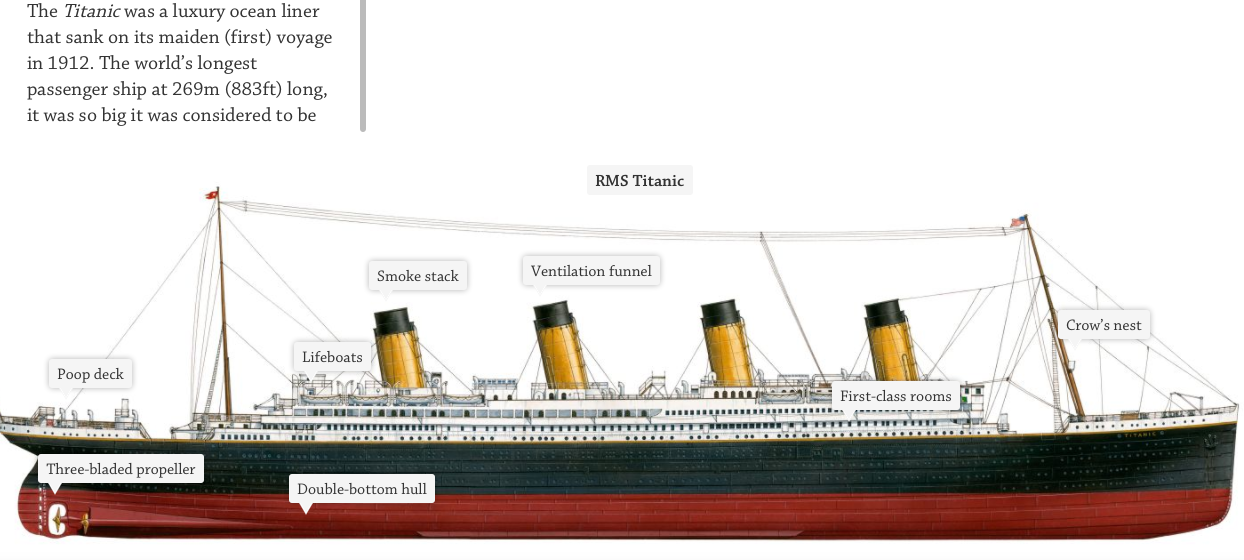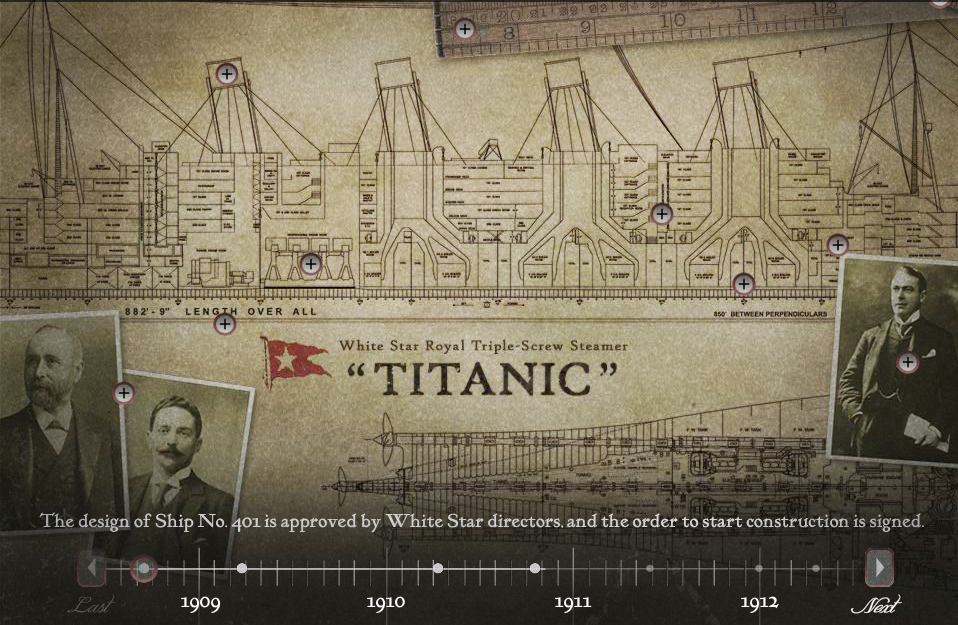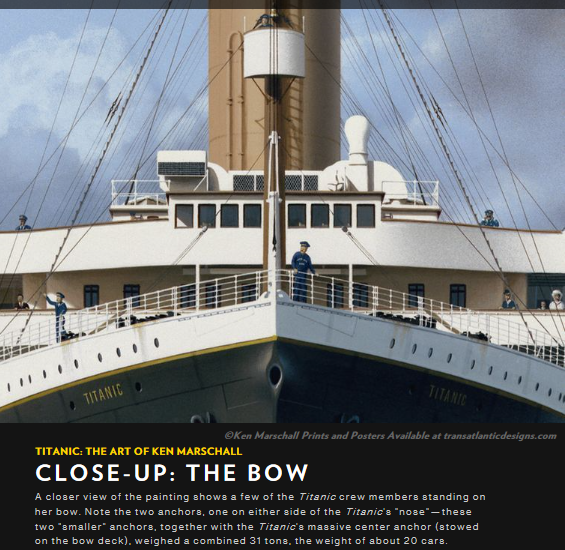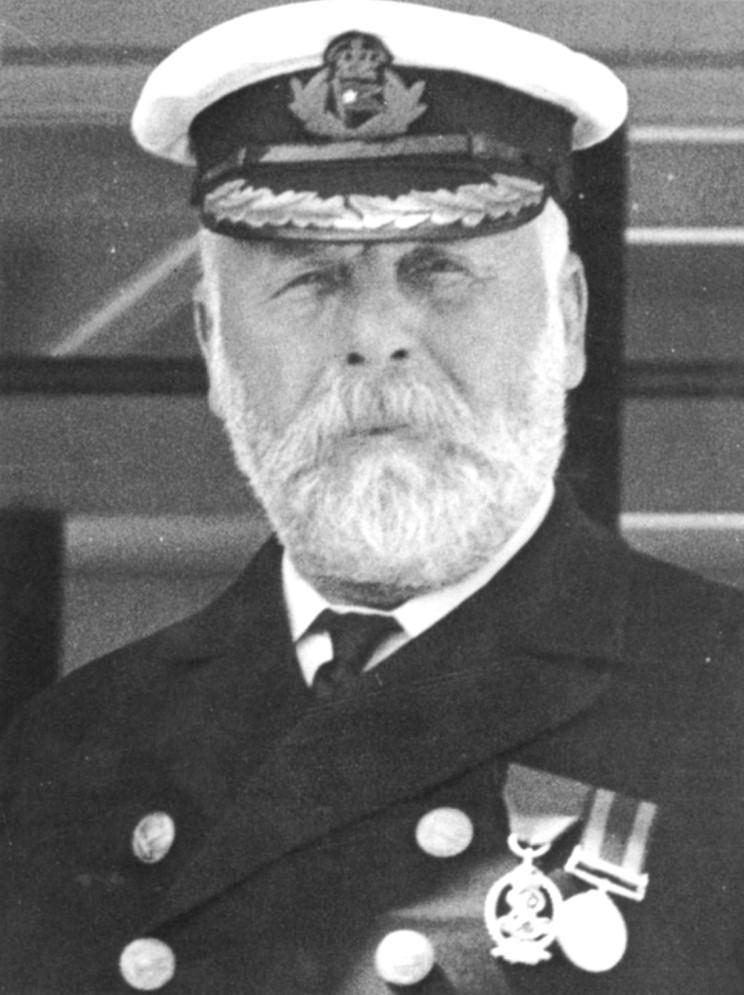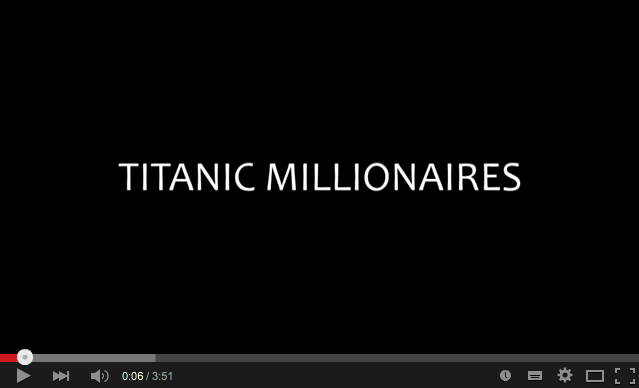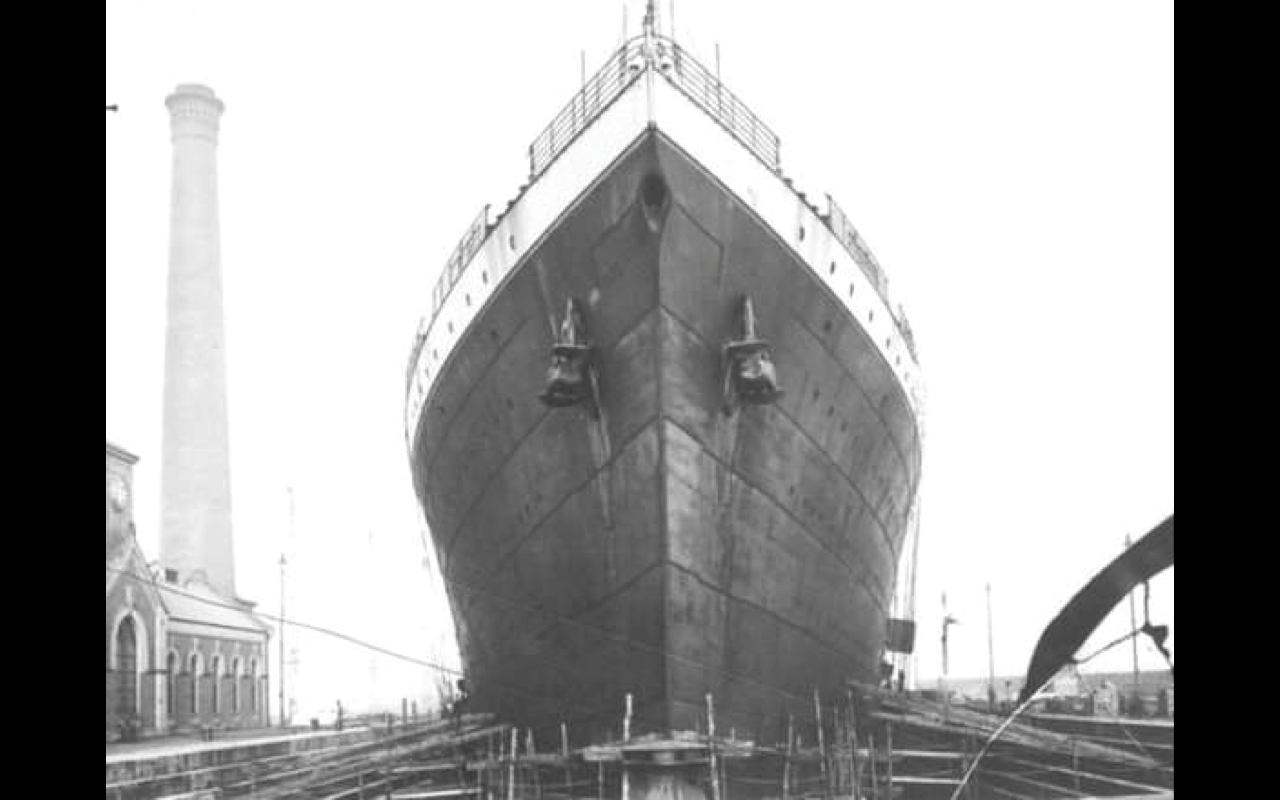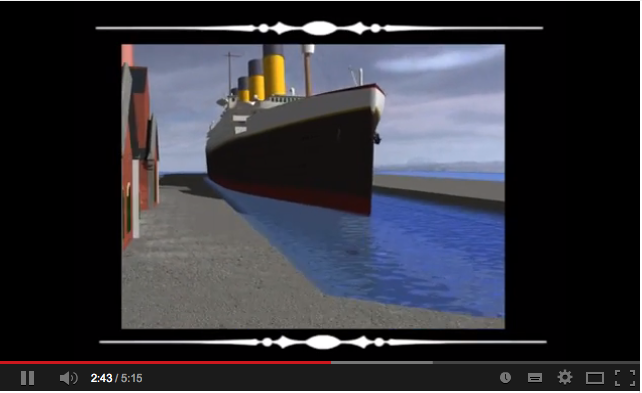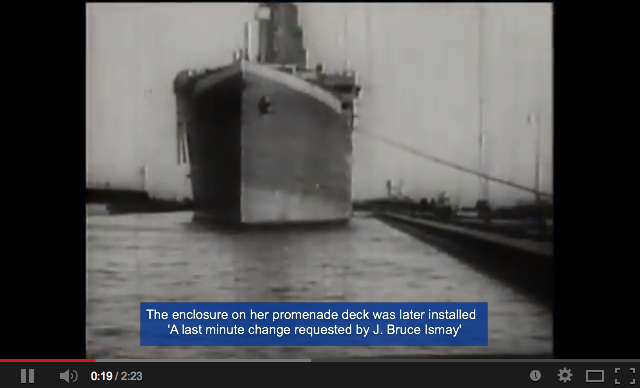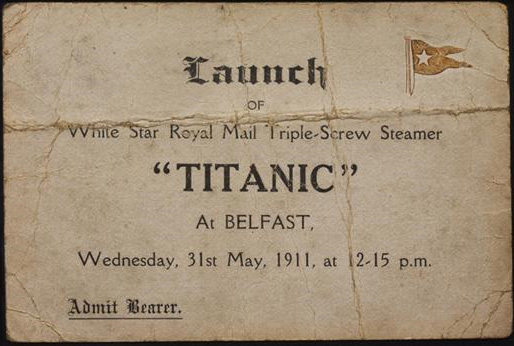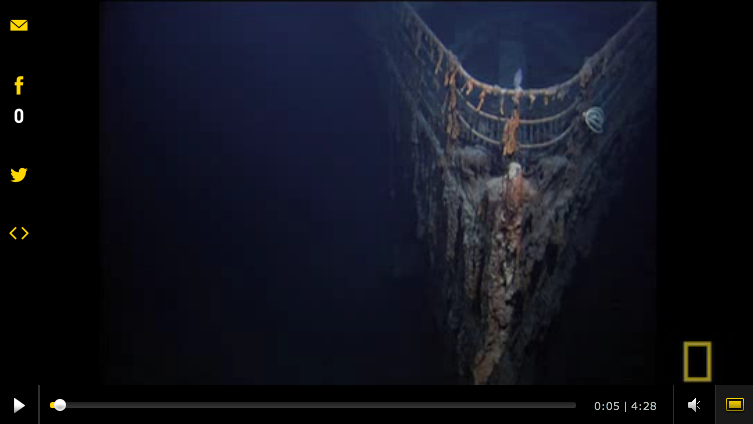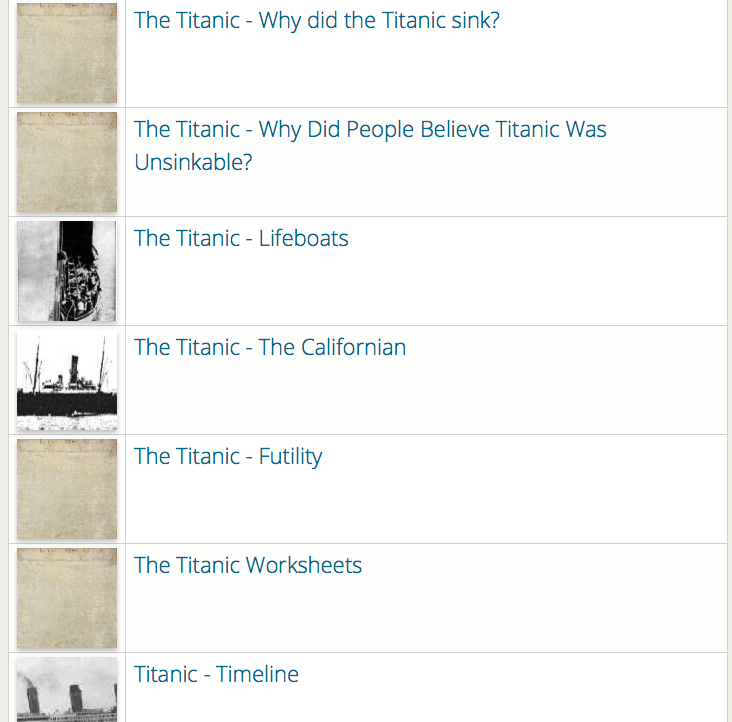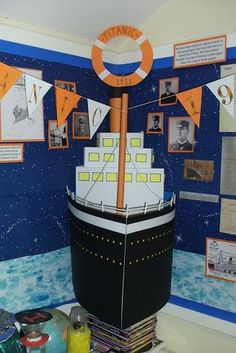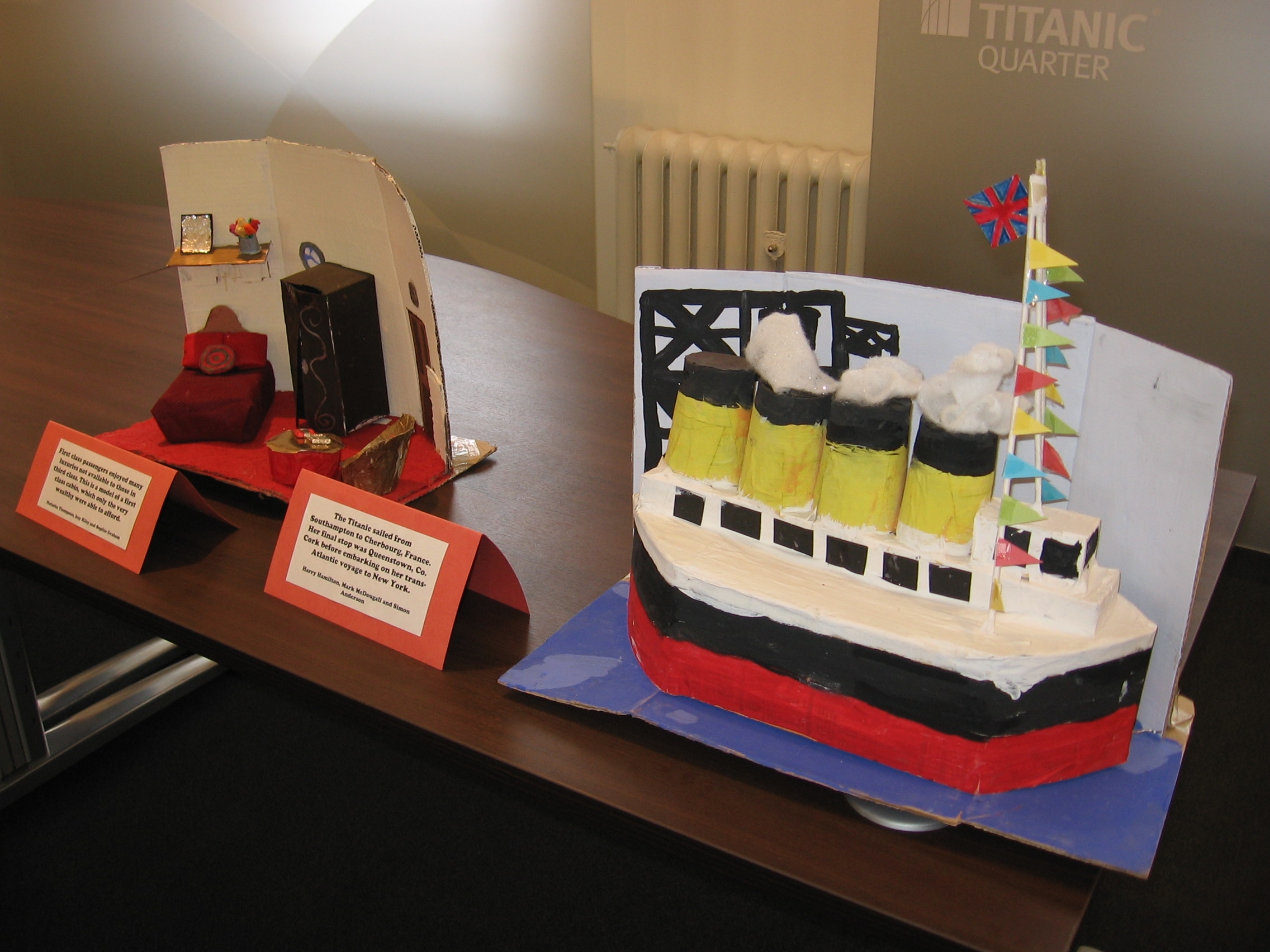Titanic
Titanic Board Game
This is a resource that allows your children to learn different facts about the Titanic using a board game.
The different steps follow the journey of the Titanic from leaving Belfast, right up to the survivors arriving in New York. The game also shows specific dates and times when all the main events of the journey happened.
There are 52 questions to answer as the game progresses. Some of the answers will require research but most answers are in the board game.
How to Play
1. You will need a counter and die to play this game.
2. Choose a question card. If you get the question right, roll the die and move your counter. If you get it wrong, stay where you are.
3. Should you land on a step that has arrows, move forwards or backwards in the direction of the arrow.
4. The first player to reach the end of the game wins.
Titanic Vocabulary Pack
If you are looking to develop your children into exciting writers then you need this pack for your Titanic topic.
This pack explores nouns, verbs, adjectives, word definitions, word exploration and notable people (Researching their roles).
Must have resource for KS1 and KS2!
Newspaper Report
This is a newspaper report that covers some of the events from the collision with the iceberg. Some notable names are mentioned as well as some of the lesser known aspects surrounding the sinking.
The Iceberg's Story and Comprehension
This is a fantastic story from the perspective of the iceberg with a comprehension aimed at KS2.
Titanic Quiz
If you are looking for an assessment to determine how much information your class have learnt over the topic, then why not have a class quiz.
There are 52 questions altogether.
Titanic Passengers and Crew Flashcards
Of course you know who Edward Smith, William Murdoch, Charles Lightoller, Herbert Pitman, Joseph Boxhall, Godfrey Lowe, James Moody, Henry Wilde, Thomas Andrews, Bruce Ismay, Frederick Fleet, David Blair, Jack Phillips, Herbert McElroy, Millvina Dean, Benjamin Guggenheim, Isidor Straus, Dorothy Gobson, Molly Brown and John Jacob Astor all are. But just incase it may have slipped your memory, download our Titanic Passengers and Crew Resource.
This is very useful for a research activity and can even be used as a display once you have finished using the flashcards.
Pic Collage Titanic
Create a picture collage of different Titanic passengers using the Pic Collage app.
This activity allows your children to research and present their passengers to the class.
To access a lesson plan using the iPad click here.
Interactive Titanic
Titanic was a luxurious ocean liner that sank on its maiden voyage across the Atlantic Ocean. It was the world’s longest ship at 269m competing with Cunard Liners to become the market leader. White Star Line and Cunard joined in 1934.
Interactive Titanic
This is a fantastic learning resource that takes you step by step through the main events of the Titanic.
This resource has specific times and simple recounts of the events, as well as pictures and other resources for your children to use and learn from.
A Closer Look at Titanic
Allow your children to take a closer look at each section of the Titanic and learn key facts and information.
This resource highlights the interior and exterior in an engaging way, especially for KS1 and KS2 children.
RMS Titanic
RMS Titanic was a Liverpool registered White Star Line ocean liner, which took approximately 26 months to construct from the hull being laid down in 1909. The liner was build alongside her sister ship the Olympic in the Harland and Wolff shipyard, Belfast Harbour. The Titanic sat in the Thompson Graving Dock on the eve of her maiden voyage. Titanic set of on 10 April 1912, sailing between Southampton, United Kingdom; Cherbourg, France; Queenstown, Ireland (Cobh) and New York, USA. RMS Titanic sailed from Southampton with 2,200 passengers and crew, and collided with an iceberg and sank four days later: 1500 people died and 700 survived.
Associated People
There were 885 crew and 1317 passengers onboard Titanic. This section will allow you to learn more about the more commonly known people onboard. The children could:
– create character profiles and fact sheets
– create artwork linked to the images
– write newspaper reports
– take part in hot-seating activities based on the information read
– create timelines of key dates (Click Here)
– write letters in the first person to loved ones
– create interview scenarios for the jobs on the Titanic
– create and record accounts of crew and passengers (Click Here for example)
Titanic Millionaires
In 1912, The Titanic was the largest manmade object that moved and was the ideal toy to amuse the wealthy, influential and elite. One of these elite passengers was John Jacob Astor, an American millionaire businessman.
Picture Powerpoint
This resource provides you with an extensive bank of images relating to the Titanic. Many of these images are famous and others are extremely rare. I would encourage you to have a look through the pictures and study them carefully because there are so many learning opportunities and points to mention in each picture. Email Team@teachingcave.com for this resource.
Thompson Graving Dock and Pumphouse
The Thompson Graving Dock is situated in Belfast harbour and is commonly known as the footprint of Titanic. Construction of the Thompson Graving Dock began in 1904 beside the pump-house and it was completed in time for the dry dock work on the RMS Olympic (31st May 1911). The Thompson Graving Dock had been constructed for the purpose of modification to the ships on dry land. At the time of its construction,the Thompson Graving Dock was the largest dry dock in the world. The dock is 268m in length and 13.4m deep.
Titanic Footage
This Titanic teaching resource shows the RMS Titanic docked in Belfast. It is the only known video resource of the liner. There are a few features that are pointed out during the clip including the name painted on the side and it also shows the shipwreck at the bottom of the Atlantic as it looks today. It is amazing for the children to see, as one day, in the not too distant future, the remains of Titanic will be gone.
Launch Ticket
This ticket was for the launch of the Titanic at 12.15PM on Wednesday 31st May 1911. As a class you could:
– Create your own Titanic boarding pass or ticket.
The children could:
– research and find similar fonts that were available at the time
– create simple artwork of the logo. This could be hand-drawn or the children could create their own ink stamps using wood, foam, scissors and glue (Click Here to see how)
– age the document using teabags
Finding the Titanic
After the sinking of the Titanic on April 15, 1912, the great ship slumbered on the floor of the Atlantic Ocean for over 70 years before its wreckage was discovered. On September 1, 1985, a joint American-French expedition, headed by famous American oceanographer Dr. Robert Ballard, found the Titanic over two miles below the ocean’s surface by using an unmanned submersible calledArgo.
In this video resourceBob Ballard relives one of the greatest moments of his career as a deep sea explorer – finding the Titanic.
Titanic Resources
This is a link to a variety of areas linked to Titanic. If it is facts you are looking for, this is the resource you need.
Newspaper Reports
You could create a newspaper report linked to the RMS Titanic. We have pages dedicated to character profiles, facts, video clips and much more to helps the children gain an insight to the story of the Titanic.
KS1/KS2 Classroom
Create different newspaper reports throughout the journey. This would make a fantastic wall display to show the story as it unfolds.
Pre Launch
Some children could start with the pre-launch story- interviewing Captain Smith, Thomas Andrews, Bruce Ismay, John Jacob Astor and some of the workers discussing the building process etc.
Launch Day
Others could write about the launch day itself, interview passengers, onlookers taking in thoughts, opinions and observations made.
Sinking
After the news has broken out this report could be about the survivor observations, Carpathia Captains thoughts as the distress call was made.
100 years later
Th is newspaper report could show how the Titanic is still talked about. The visitor’s centre, the titanic footprint (Thompson Graving Dock) etc.


